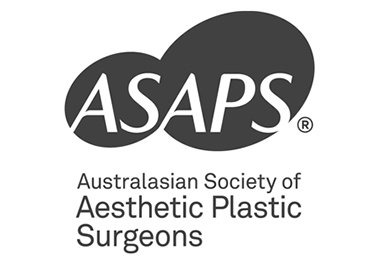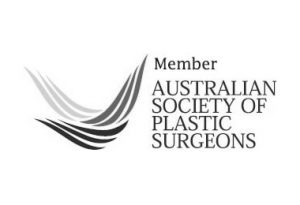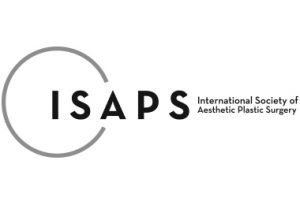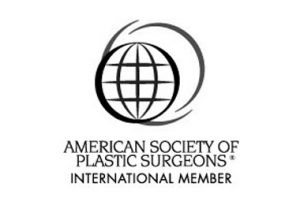GENERAL RISKS of SURGERY
1) Risks specific to plastic & cosmetic surgery
These are examples of risks that may occur with cosmetic or reconstructive procedures, including but not limited to:
Bleeding (haematoma)
-
Blood can collect beneath the skin and may require a return to theatre to drain. Most occur in the first 24 hours.
Fluid build-up (seroma)
-
Fluid may accumulate under the skin in the weeks after surgery; small seromas can settle on their own, larger ones may need needle aspiration or drainage. Wearing compression as advised helps reduce risk.
Infection
-
Even with sterile technique, wound infections can occur and are treated with antibiotics and wound care. Prompt review is essential if you develop redness, heat, discharge, fever, or increasing pain.
Delayed healing / wound separation
-
More likely in smokers, patients with higher BMI, diabetes, or reduced circulation; may require prolonged dressings or revision procedures.
Altered sensation / numbness
-
Temporary numbness around incisions is expected and usually improves over months; a degree of altered sensation can persist up to 12–24 months, and rarely may be permanent.
Scarring
-
All surgery leaves scars. Scars often look red/raised for several months before softening and fading over 12–18 months. Some people develop hypertrophic or keloid scars that may need silicone therapy, steroid injections, laser or revision. Incisions are placed as discreetly as feasible.
Skin loss / fat necrosis
-
Areas of skin or underlying fat can lose blood supply and die (necrosis), delaying healing and occasionally requiring further surgery. Smoking greatly increases this risk.
Contour irregularities & asymmetry
-
Subtle differences from side to side are normal. Lumps, dimples, or ripples can occur after contouring procedures; minor revisions are sometimes considered later.
Skin discolouration or prolonged swelling
-
Bruising and pigment changes can take weeks to months to settle; some intermittent swelling may persist for a time.
Need for revision surgery
-
A secondary procedure may be recommended to optimise shape, scars, or symmetry once tissues have settled.
Procedure-specific risks (examples, not exhaustive)
-
E.g., capsular contracture or implant rupture after breast augmentation; irregularities after liposuction; “dog-ears” after skin excision; changes to nipple/areola sensation or position after breast procedures. Your consent will include the specific risks that apply to your operation.
Lifestyle factors that raise risk
-
Nicotine exposure (smoking or vaping), poorly controlled blood pressure, certain medications/supplements (e.g., aspirin/NSAIDs, high-dose vitamin E) and high BMI increase complications—your surgeon will advise on pre-op optimisation and medication adjustments.
2) Risks that apply to any operation
All operations, regardless of type, carry general risks including but not limited to:
Swelling, bruising, and skin colour changes
-
Common after surgery; compression garments and following post-op instructions help. Sudden severe swelling, fever or escalating pain needs urgent review.
Haematoma / bleeding
-
Ongoing bleeding can require urgent treatment or drainage and increases infection risk. Blood-pressure control and pausing specific medicines/supplements when advised helps reduce risk.
Wound breakdown or separation
-
May occur due to infection, tension, poor blood supply, pressure, or medical conditions. Can require prolonged dressings or further surgery (including grafting).
Allergic/sensitivity reactions
-
Some patients react to antiseptics, tapes, dressings, sutures or topical products; usually mild and manageable once identified.
Suture-related issues
Abnormal scarring (hypertrophic/keloid) or scar widening
-
More common in certain skin types or when healing is delayed; may respond to silicone, taping, steroid injections, laser or surgical revision.
Deep vein thrombosis (DVT) & pulmonary embolism (PE)
-
Clots in the leg can travel to the lungs and be life-threatening. Prevention includes early mobilisation, compression stockings and, for higher-risk patients, blood-thinning medication.
Smoking-related complications
-
Nicotine significantly increases the risks of infection, wound problems, necrosis, DVT/PE and lung complications. Stopping at least 4 weeks before and 4–6 weeks after surgery is strongly recommended.
Chronic (persistent) pain — uncommon
-
Occasionally scars may involve or irritate nerves, leading to ongoing pain that can be difficult to fully resolve.
3) Risks related to anaesthesia
Modern anaesthesia is very safe in healthy patients and your anaesthetist will tailor care to your health and operation, but as with all medical treatments it carries potential risks including but not limited to:
Post Anaesthesia side-effects
-
Sore throat after a breathing tube; nausea/vomiting (PONV); drowsiness, shivering, headache, IV site discomfort. Most resolve quickly with treatment.
Dental injury
-
Damage to teeth can occur during airway management; minor lip/tongue injuries are more common. Your anaesthetist will check for loose or vulnerable teeth pre-op.
Eye irritation/corneal abrasion
-
The clear surface of the eye can rarely get scratched while you’re anaesthetised; usually heals without lasting effects. Eyes are taped/protected to lower the risk.
Nerve injury & positioning problems (uncommon)
-
Pressure or position during an operation can irritate nerves, causing temporary numbness/weakness; permanent problems are rare. Careful padding and positioning reduce risk.
Post-operative confusion/delirium (usually short-term)
-
More common in older or vulnerable patients; typically arises in the first few days and settles as underlying causes are treated.
Allergic reactions (including anaphylaxis) & drug reactions
-
Severe reactions are rare but require immediate treatment; your anaesthetist will review your history and allergies to reduce risk.
Awareness under general anaesthesia (very rare)
-
Unintended recall during anaesthesia can happen but is uncommon; teams use multiple safeguards to prevent it.
Lung complications
-
Aspiration, bronchospasm or partial lung collapse can occur rarely; risk is minimised with fasting instructions and airway protection.
Serious but rare events
-
Include heart rhythm problems, stroke, heart attack or life-threatening infection. Your individual risk depends on your health and the nature/duration of your operation.
What you can do to reduce risk
-
Stop nicotine (smoking/vaping) at least 4 weeks before and 4–6 weeks after surgery.
-
Follow medication instructions (e.g., pausing aspirin/NSAIDs or supplements when advised).
-
Optimise health (control blood pressure, manage weight, treat anaemia, maintain good nutrition).
-
Mobilise as instructed and wear compression as advised.
-
Attend all follow-ups and contact us promptly with concerns.
Important note
The risks listed above are examples only and include but are not limited to those described. Every patient’s risks vary depending on their medical history, lifestyle and the type of procedure being performed. These will be explained in detail during your consultation and outlined in your consent documents.
This information is general and does not replace a consultation with your surgeon and anaesthetist. Your consent documents will outline the specific risks for your chosen procedure and your personal risk profile. If you have questions at any time, please ask our team.
For more information about surgery risks, please call Dr Hertess Plastic Surgery on (07) 5601 0492.
DR HERTESS MEMBERSHIPS





CONTACT DETAILS
Contact Number: (07) 5601 0492Email: enquiry@drhertess.com.au
Address:
Ground Floor, 220 Ashmore Road, Benowa QLD 4217
